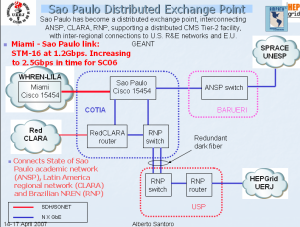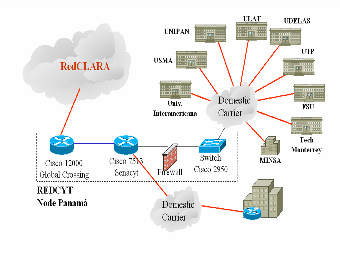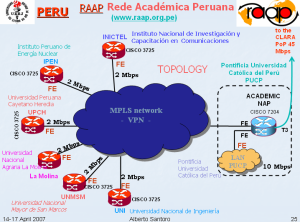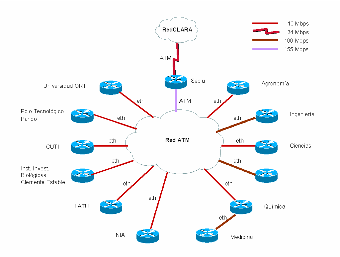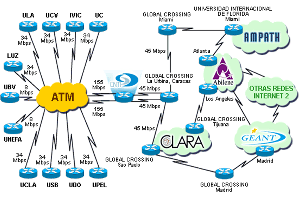...
| Include Page | ||||
|---|---|---|---|---|
|
ALICE and RedCLARA
Since its launch in September 2004, the ALICE projecthas been a key component in reducing disparities within Latin America by bridging the "Digital Divide" both within the region and with the rest of the world. The project has enabeled Latin American researchers to become key players in the global research community.
...
The performance of Research and Educational Networks of Argentina, Brazil, Chile, Mexico, Guatemala and Uruguay has significantly improved due to ALICE project. In December 2001, Argentina's (RETINA) connected to AMPATH, so the increase in performance to Argentina can be seen from US. Around June 2006 the TCP throughput of Argentina increased significantly. The average RTT reduced from 600 ms to 200 ms. The minimum RTT reduced from 250 ms to 200 ms. The packet loss has also decreased significantly. From January 2001 - July 2001 the loss from US to Brazil decreased from 8 % to 1 %. The Average RTT decreased from 375 ms to 200 ms. The TCP throughput improved but it has not stabilized (still lots of variations). In June 2001, Chile's REUNA becomes the first Latin American NREN (National Research and Educational Network) to get connected to the AMPATH POP in Miami. As a result the TCP throughput increased significantly. Minimum RTT reduced from 230 ms to 200 ms and average RTT reduced from 725 ms to 250ms. Packet loss reduced from 10 % to 1 %. In July 2003 Mexico's connectivity improved. Minimum RTT became stable from 100 ms to 60 ms and average RTT also became stable. Since Uruguay joined in June, 2005 its TCP throughput has improved. Average RTT reduced from about 325 ms to 225 ms. Minimum RTT reduced from about 270 ms to 220 ms The loss situation has not seen much improvement.
In the beginning of 2006 Paraguay moved from satellite to fiber but Cuba is still connected through satellite. Average and min RTT of Cuba are greater than 800ms and the packet loss is around 2-4 % which is dreadful. RedClara is also planning for a connection to Cuba in the near future, so that it can also play role in global research initiatives.
Status of Latin American Countries
A very interesting presentation of the status of networking in Latin America can be found in "Closing the Digital Divide in Latin America" by Alberto Santoro or UERJ, Brazil. Below we show the measured performance of connections from N. America to Latin America.
...
7 Universities and 3 Governmental Institutions
Peru
Uruguay
31 Universities Institutions ans Schools
Venezuela
Routing
Traceroute from SLAC to Latin American Countries
...
